So, we recently released our study on domain structures for international SEO to add some data to this conversation.
At the very least, we wanted to understand how popular different domain structures were. We also hoped our analysis might reveal some secrets about how Google’s algorithm responds to different domain structures internationally. Below are our key findings.
1. 56% of the top three positions are held by ccTLDs
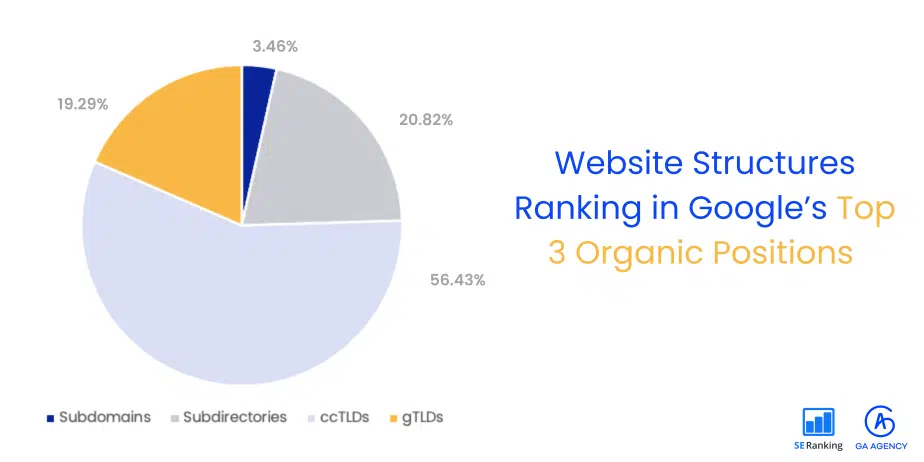
Our data reveals that ccTLDs are the most prevalent website structure in the top three ranking positions globally. This suggests those who favor ccTLDs are right to do so.
However, ccTLDs can be expensive and inefficient to manage, so take this into consideration and choose them only if you are confident they are the right solution for you.
2. The prevalence of ccTLDs and gTLDs in SERP positions are inversely correlated
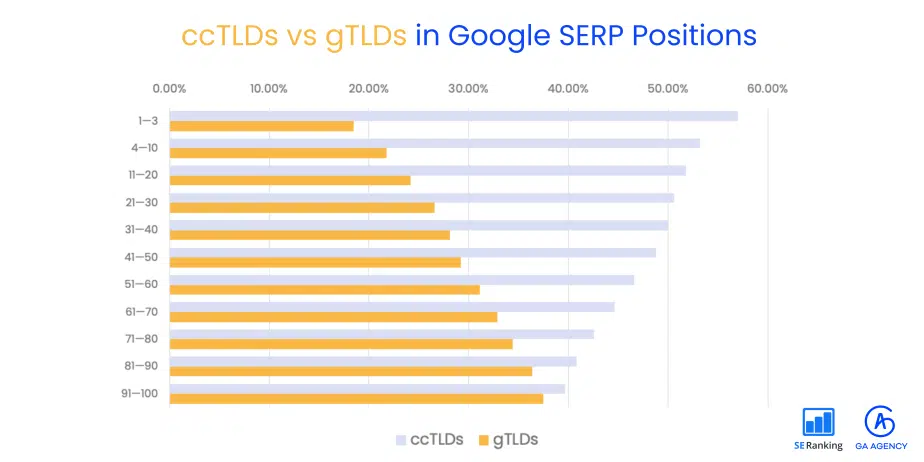
gTLDs with no market subdomains or subdirectories are inversely correlated with ccTLDs as you go from position 1 to 100.
Perhaps this is just a coincidence, but it indicates that Google does not favor websites with no discernable geotargeting for that market.
3. Subdirectories are the second most prevalent website structure in the top three positions
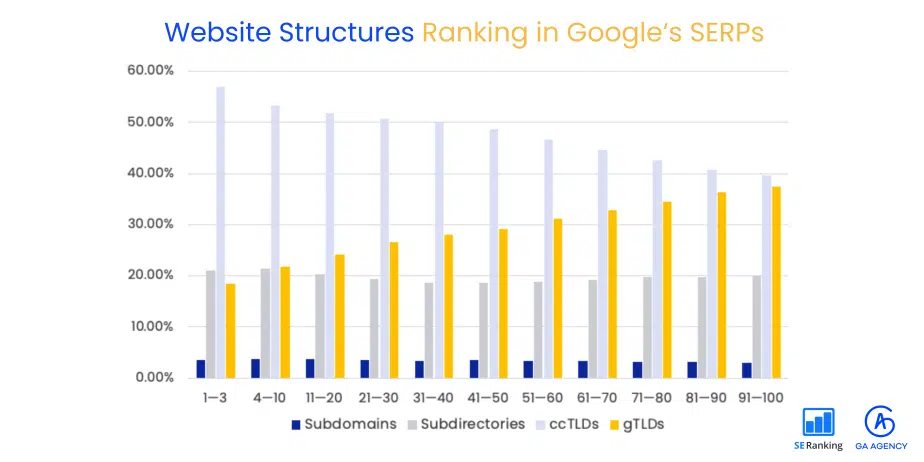
Subdirectories appear in over 20% of Google’s top positions and account for around 20% of all SERP positions, reflecting that they are a popular choice.
4. Subdomains account for just 3% of domain structures in SERPs but are only prevalent in top positions in multilingual markets

Switzerland represented the only multilingual market in our study, and it’s the only country where subdomains are prevalent in the top three positions.
For French keywords in Swiss SERPs, subdomains outperformed subdirectories. For Italian keywords, the opposite was true.
5. Portugal is the only market where subdirectories are more common in the top three positions than ccTLDs
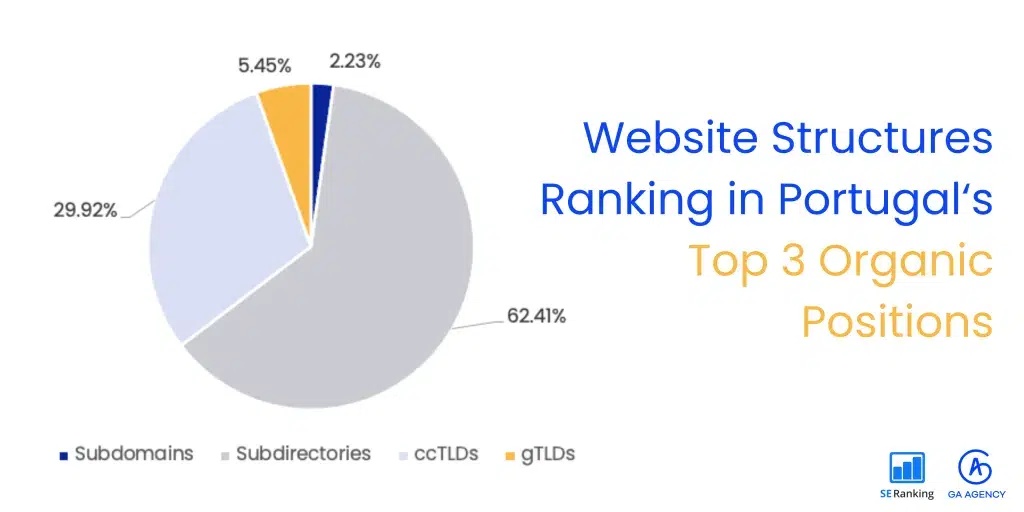
Portugal bucked the global trend and was the only market where subdirectories more commonly ranked in the top three positions than ccTLDs.
Filipa Silva, a Portuguese SEO specialist, said:
- “This data reflects the fact that there aren’t many very big Portuguese brands who are able to compete with multi-national brands who are using subdirectory structures. For example, brands like Pull and Bear, Zara and Calzedonia all perform incredibly when it comes to fashion keywords with subdirectory structures.”
6. Czechia has the highest rate of ccTLDs in Google SERPs
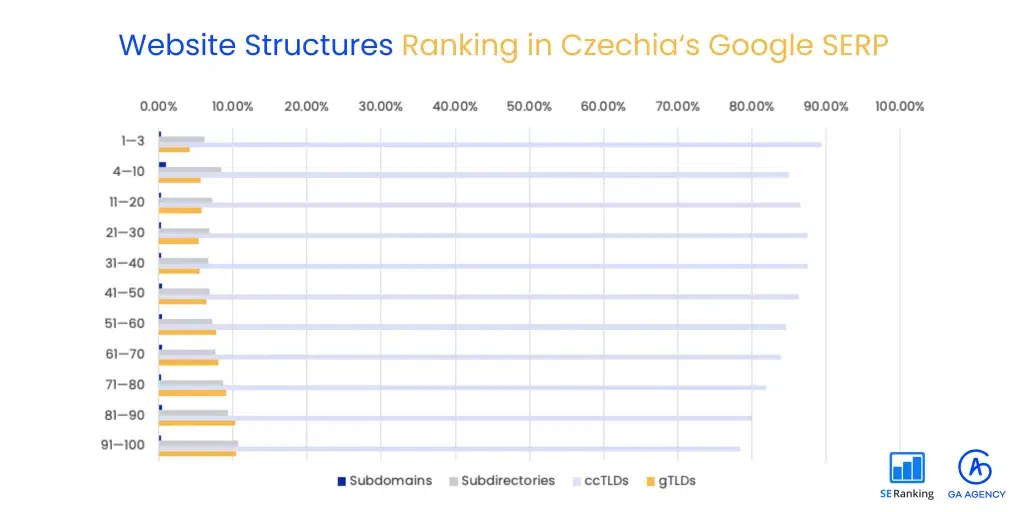
Of all the countries analyzed, ccTLD websites dominate Czechia’s SERPs. Almost 90% of the top three positions were taken by .cz ccTLDs. Even combining .us and .com together in the U.S. results in fewer ccTLDs (83%) than in Czechia (84%).
Iryna Melnyk, a Czech SEO specialist, said:
- “Many big brands tend to either choose not to translate their content into the Czech language or use poor translation services, which we can see right through. And this is such a shame, suggesting that there is a big opportunity for multi-national brands to translate their content better into an optimized format for the Czech market.”
7. In Austria, .AT ccTLDs inversely correlate with German ccTLDs
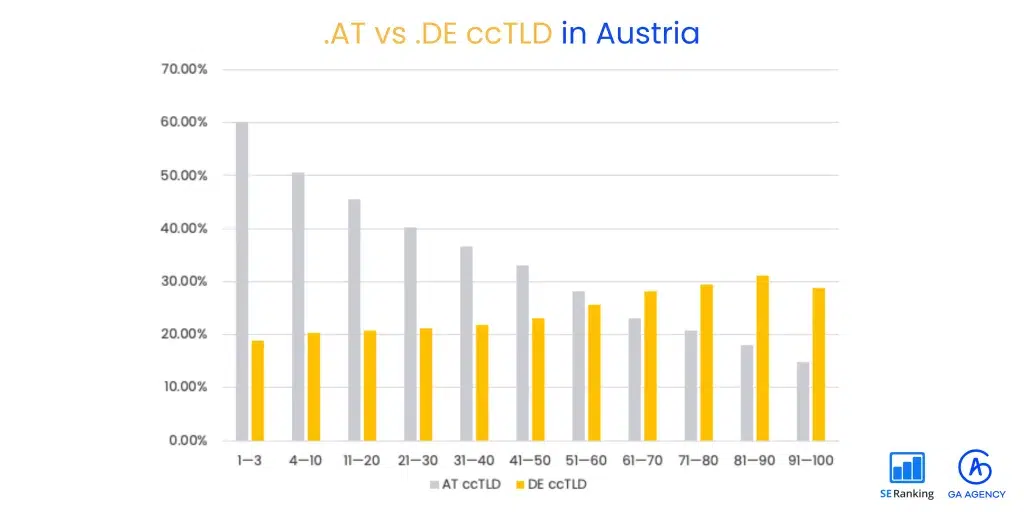
German ccTLDs (.de) account for almost 20% of all top positions in Austria. By contrast, Austrian ccTLDs make up less than 1% of all domain structures in Germany. We only found three Austrian ccTLDs in the top three positions of German SERPs.
Tatjana Batjaev, a German SEO specialist, said:
- “Given the size of the populations and their economies, this data comes as no surprise in general. Lots of German brands sell directly into Austria via .DE domains, but there are nuances in language and we’d always recommend localizing content into an Austrian dialect as best practice.”
Dig deeper: International SEO: How to avoid common translation and localization pitfalls
8. The popularity of .com means the U.S. is a statistical anomaly for gTLD use
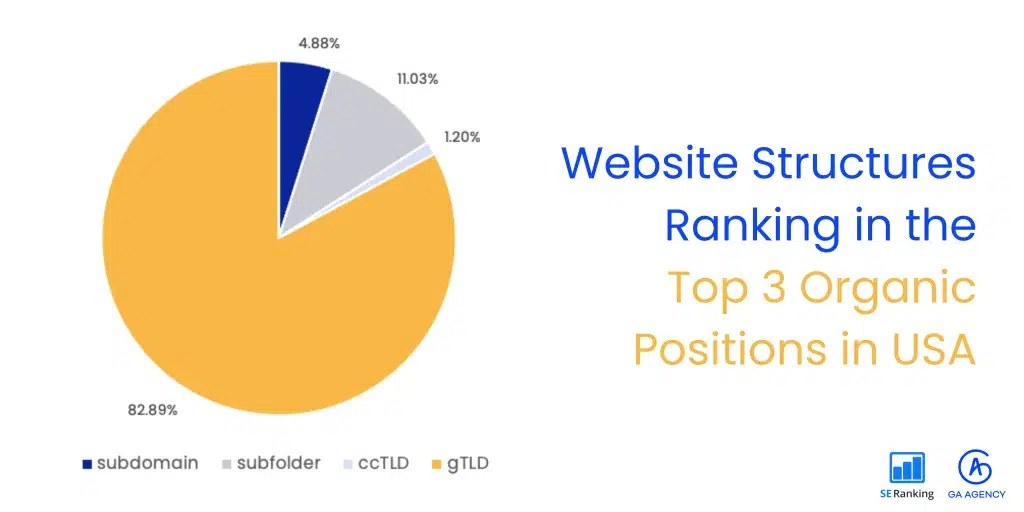
The overwhelming popularity of the .com domain in the U.S. market means it is very rare to see the official .us ccTLD in use.
Melina Lyraki, an SEO specialist from the U.S., said:
- “.com domains are ubiquitous in the U.S. market, and many people just assume .com is U.S.’s ccTLD. Given how popular it is, it is probably the only market where we would ever recommend using a gTLD (.com) ahead of the country’s ccTLD when advising brands who are only targeting the U.S. market.”
What does this data mean for your international SEO strategy?
This data supports those who think ccTLDs are the best for International SEO. If you choose that route, just remember that they require more resources to build, maintain and optimize than other options.
Evidence from the Swiss market suggests that subdomains can be just as effective as any other domain structure. Perhaps we shouldn’t always be so quick to discount the long-maligned subdomain.
That said, it’s clear that subdirectory structures are more commonly used and found in the top organic positions than subdomains. Whichever strategy you choose, remember that this is just your starting point for success.
Study methodology
- GA Agency worked with our partners at SE Ranking to analyse 20,000 keywords across 15 different markets, counting how often each website structure appears in each Google position from 1-100. In total, over 1.7 million SERP positions were analyzed.
- We looked at ccTLDs, gTLDs with subdomains, gTLDs with subdirectories and gTLDs without evidence of market-specific subdomains or subdirectories.
- We did not include website structures using URL parameters in this study, as they are not recommended.
- We analyzed ~1,400 keywords in each market.
- We used transactional or purchase intent e-commerce keywords across all languages (defined as such by analyzing the sites ranking in the top 10 positions).
- Markets analyzed: Austria, Switzerland (German, French and Italian-speaking regions), Czechia, Germany, Spain, France, Hungary, Italy, Japan, Poland, Portugal, Russia, Sweden, Turkey, United Kingdom and the United States.


